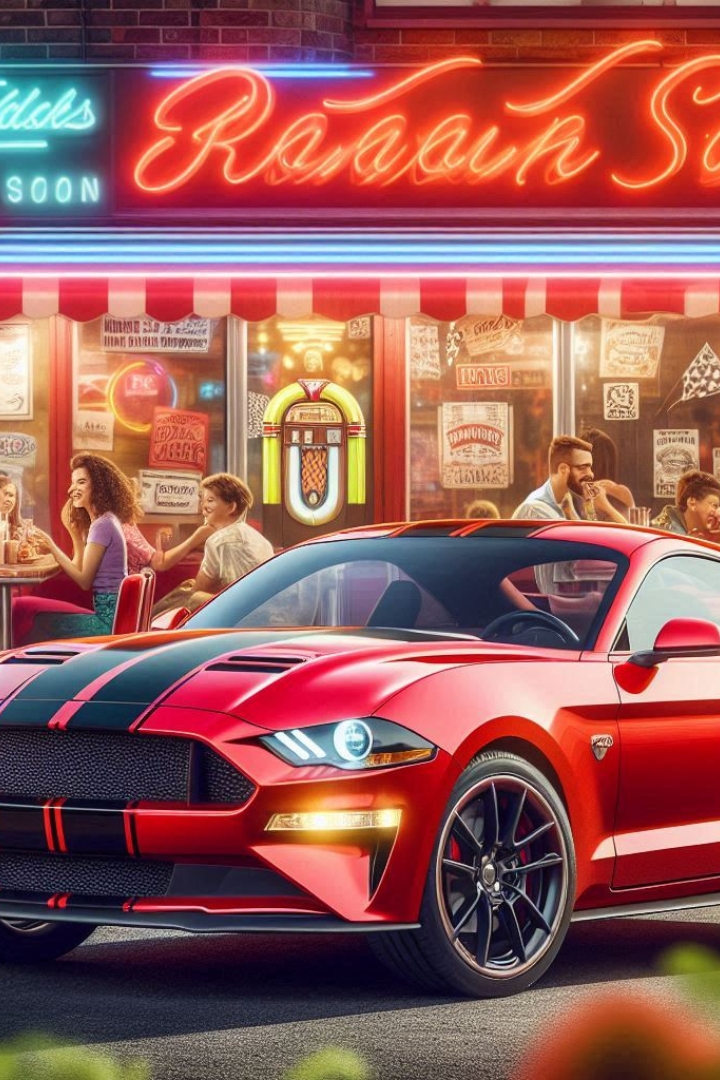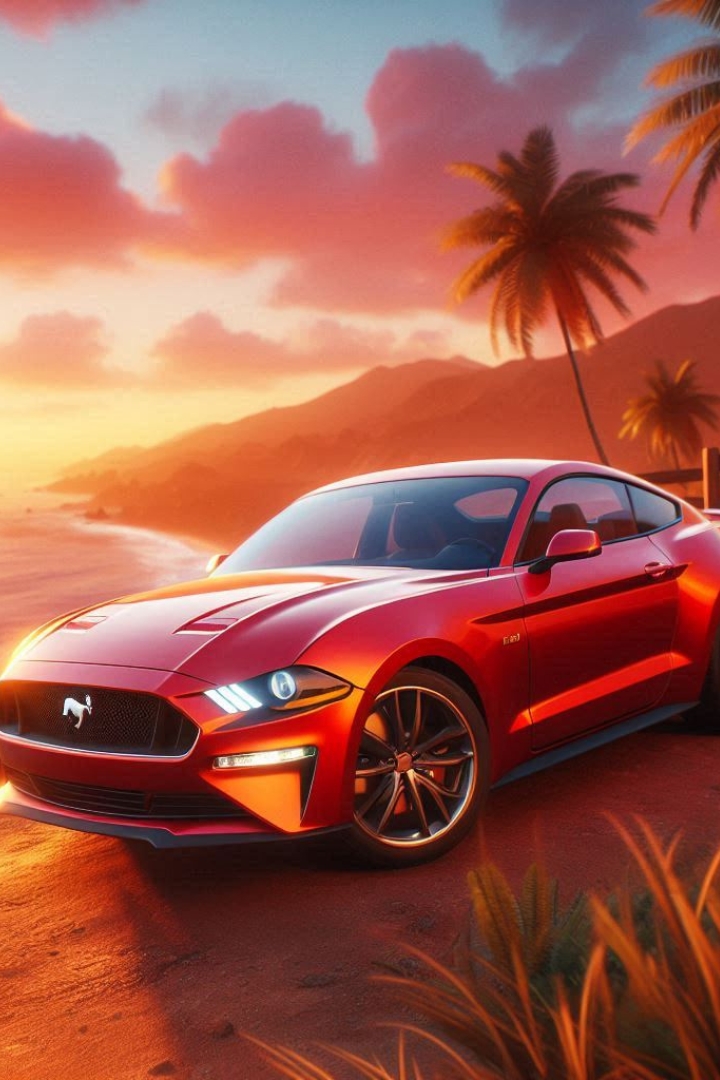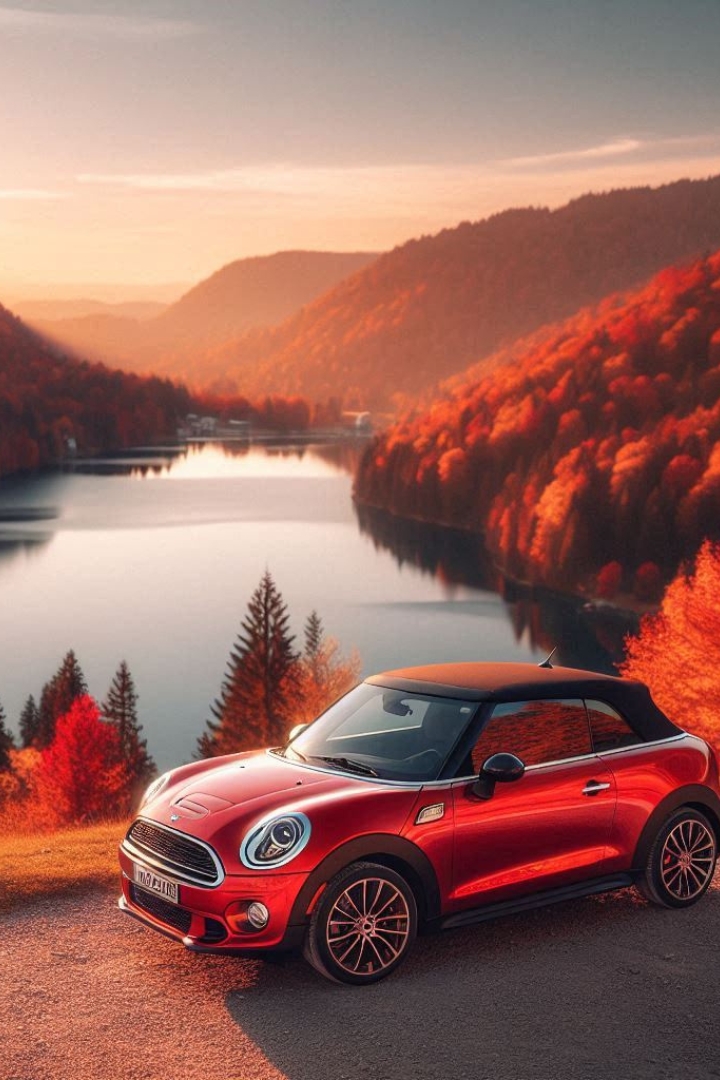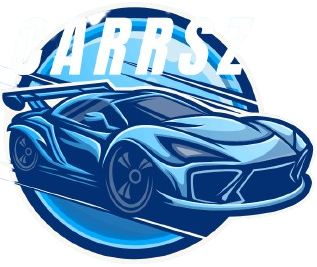The Best Pony Car Iconic Legacy of Pony Cars 35
Table of Contents
- The Best Pony Car Iconic Legacy of Pony Cars 35
Introduction
Horse vehicles address a clever part in vehicle history, blending style, execution, and moderateness into an unquestionable pack that captivated the American vehicle market. These vehicles, depicted by their smooth plans and exuberant execution, emerged during the 1960s and quickly transformed into a picture of lively extravagance and opportunity. The saying “horse vehicle” was organized to depict one more class of vehicles that merged parts of sports vehicles and muscle vehicles, zeroing in on a section energetic for both flair and speed.
The Birth of the Pony Car
The pony vehicle eccentricity began with the introduction of the Entry Horse in April 1964. Arranged by Lee Iacocca and his gathering, the Pony was an ever-evolving vehicle that hit the nail on the head for the American public. It was expected to be both stylish and sensible, intriguing to energetic buyers who required a show vehicle without the over the top expense tag. Its thriving was flashing, clearing a path for various makers to trail not very far behind likewise.
The Pony’s flourishing showed one more market potential, inciting various automakers to shape their own doorways into this blooming part. The Chevrolet Camaro, Pontiac Firebird, and Keep away from Challenger in a little while followed, each adding its remarkable flavor to the pony vehicle mix. These vehicles regularly included long hoods, short back decks, and powerful styling, ascribes that transformed into the principal characteristics of the class.
Plan and Execution
Horse vehicles are often noted for their unquestionable arrangement features, including strong lines, solid grilles, and obvious guard flares. They joined parts of sports vehicle style with conventional, customary comfort. Not at all like pure games vehicles, which could be irrational for ordinary driving, horse vehicles offered a congruity among execution and comfort.
Execution wise, horse vehicles were at first furnished with an extent of engine decisions, from genuine inline-sixes to solid V8s. This assortment allowed buyers to pick a vehicle that matched their driving style, whether it was a casual journey or vivacious driving. The openness of execution groups and affiliate’s trade changes also inferred that horse vehicles could be adjusted to suit individual inclinations and necessities.
The Splendid Time frame
The last piece of the 1960s and mid 1970s are a large part of the time contemplated the splendid time of pony vehicles. During this time, the market saw a development of new models and a variety of engine decisions, from the commonsense as far as possible. The introduction of first class execution varieties, similar to the Mustang GT350 and the Camaro Z/28, solidified the pony vehicle’s remaining as a display machine.
In any case, the oil crisis of the 1970s and extending security costs provoked a decline in the predominance of tip top execution vehicles. The pony vehicle market, like an enormous piece of the vehicle business, expected to conform to changing buyer tendencies and monetary conditions.
Recuperation and Current Period
The mid 2000s saw a renaissance of the pony vehicle. Infamous models like the Entry Mustang, Chevrolet Camaro, and Sidestep Challenger were indeed presented with current development while holding the commendable arrangement parts that set them up for life. This reclamation exploited a sensation of wistfulness while incorporating contemporary execution and prosperity features.
Present day horse vehicles have created to integrate pattern setting advancements, for instance, electronic robustness control, refined infotainment structures, and further created eco-benevolence, yet they have stayed steady with their establishments with powerful styling areas of strength for and.
Legacy and Social Impact
Horse vehicles have made an extremely durable engraving on auto culture. They address the spirit of advancement and the mission for individual adaptability that depicted the American car industry during the 1960s and 1970s. These vehicles have been complimented in films, network shows, and renowned media, further embedding them in the social mindfulness.
The practice of pony vehicles is similarly clear in their persisting through commonness among fans and specialists. Praiseworthy models are extraordinarily sought after, and the state of the art variations continue to attract one more time of fans. The blend of style, execution, sensibility that described the principal horse vehicles really resonates today, showing that the charm of these eminent vehicles stays solid areas for as could be anticipated.

A Deeper Dive into Pony Cars: Evolution, Impact, and Legacy
Evolution of the Pony Car Concept
The saying “Horse vehicle” was sired by the vehicle press and public to portray one more assortment of vehicle that emerged during the 1960s. The thought was a response to moving client longings for sensible yet stylish and execution arranged vehicles. While the Portage Pony is habitually credited with making the part, it’s essential to understand how the thought created and what set these vehicles beside their precursors.
Starting Arrangement Thinking: The principal horse vehicles were arranged with an accentuation on enthusiastic charm. They incorporated an enthusiastic, powerful arrangement with long hoods and short back decks. This plan looked stimulating as well as viewed as a collection of engine decisions, from base models to first class execution varieties.
Expanding the Part: After the Pony’s flourishing, various makers saw the market potential. Chevrolet introduced the Camaro in 1966, Pontiac followed with the Firebird, and Sidestep shipped off the Challenger. All of these models brought its exceptional style and execution limits, adding to a ferocious and different pony vehicle market.
Execution Improvement: In the early years, horse vehicles offered an extent of engines from productive six-chambers major areas of strength for to. As the market created, creators introduced first class execution interpretations. The last piece of the 1960s and mid 1970s saw the introduction of remarkable models like the Pony Chief 302 and the Camaro Z/28, which became benchmarks for execution in the pony vehicle section.
Effect on the Vehicle Business
Horse vehicles on a very basic level impacted the vehicle business, influencing vehicle design, publicizing, and purchaser direct.
Setup Effect: The advancement of the pony vehicle condition provoked an arrangement turmoil in the auto business. The long-hood, short-deck arrangement transformed into a renowned classy, influencing various types of vehicles as well as persuading plan perspectives in various parts.
Exhibiting Frameworks: The advancing methodology for horse vehicles focused in on youth and energy, using brand names and ads that emphasizd opportunity, execution, and style. This method set a precedent for how vehicles could be advanced as lifestyle things instead of basic transportation.
Serious Soul: The improvement of pony vehicles laid out a vicious environment where makers consistently attempted to beat each other in regards to execution, plan, and features. This resistance drove headway and kept the part powerful and stimulating.
Social Impact: Pony vehicles quickly became pervaded in standard society, featuring perceptibly in films, television projects, and music. Their relationship with insubordination and opportunity made them images of their period, and they remain pictures of American auto culture.

Challenges and Adaptations
Regardless of what their differentiation, horse vehicles opposed two or three difficulties all through the long stretch.
Oil Emergency and Deliveries Rules: The oil emergency of the 1970s and developing floods rules incited a decreasing in the development of dominating execution vehicles. Horse vehicles, known for solid areas for them, expected to adjust to these new circumstances by offering seriously genuine, more eco-obliging motors and further made floods controls.
Changing Business region Inclinations: As client propensities moved towards more reasonable and eco-obliging vehicles, the market for horse vehicles dwindled. In the last piece of the 1970s and mid 1980s, different producers downsized or completed their horse vehicle models considering these creating models.
Recovery and Modernization: The mid 2000s got a recovery of interest horse vehicles. Makers eventually introduced empowered kinds of admirable models, mixing customary course of action parts in with present day progression and execution refreshes. This recovery was independent by the presentation of stylish Section Horses, Chevrolet Camaros, and Avoid Challengers, which really crushed any check among thoughtfulness and contemporary vehicle needs.
Best in class Horse Vehicles
The ongoing horse vehicles hold an immense piece of the soul of their ancestors while integrating current developments.
Mechanical Advances: Stream horse vehicles offer best in class improvement, for example, touchscreen infotainment frameworks, driver help highlights, and versatile suspension structures. These updates further foster solace and thriving without surrendering the show that depicts the part.
Execution Assortments: The show part of horse vehicles stays vivacious. Models like the Segment Horse Shelby GT500, Chevrolet Camaro ZL1, and Avoid Challenger SRT Hellcat stretch the limits of speed and power, taking one of a kind thought of fans who long for extremely charged thrills.
Sensibility Models: As the vehicle business moves towards reasonableness, there is a making interest in crossbreed and electric horse vehicles. Creators are inspecting ways to deal with coordinating eco-obliging advances while defending the show and force that make these vehicles extraordinary.

Inheritance and Future
The act of horse vehicles is clear in their passing forward through assurance and social importance. They address a mix of style, execution, and openness that keeps on reverberating with vehicle sweethearts. Their impact relaxes past the vehicle world, molding how vehicles are seen as pictures of possibility and uniqueness.
Looking forward, the horse vehicle part faces the preliminary of advancing with changing turns of events and market requests. Notwithstanding, the center ascribes of style, execution, and energy stay vital for their personality. As vehicle plans keep on moving, horse vehicles will probably change while remaining dependable with the substance that made them prominent notwithstanding.
In outline, horse vehicles have made an enduring etching on vehicle history, influencing configuration, progressing, and social discernments. Their movement from the vital Portage Horse to the current emphasess features their versatility and forging ahead through ensure, guaranteeing that the custom of the horse vehicle will proceed to move and entry from this point forward, endlessly.
The Evolution and Enduring Appeal of Pony Cars
Significant Dive into Key Models
1. Portage Horse
Exceptional Farewell (1964): The Portage Horse was uncovered on April 17, 1964, and its impact was fast. With its blend of execution, plan, and sensibility, it set the benchmark for horse vehicles. The principal model featured a 2+2 visitor plan, a broad assortment of engine choices, and customization decisions, which allowed buyers to fit the Pony as they would like and needs.
Famous Varieties: Over this present time is the ideal open door, the Pony has seen different tip top execution varieties, including the GT350 and GT500, arranged through Carroll Shelby. These models extended the limits of the pony vehicle thought with state of the art planning and track-arranged execution.
Current Emphasess: The latest Yearlings blend retro styling in with present day advancement. The Mustang Mach 1 and the Shelby GT500 show off advanced execution limits, while the introduction of the all-electric Yearling Mach-E tends to a leap towards future flexibility, staying aware of the Pony’s spirit in an eco-obliging pack.
2. Chevrolet Camaro
Show (1966): The Camaro was Chevrolet’s response to the Foal, shipped off in September 1966 as a quick competitor. It offered an extent of engine decisions and was planned to get a comparative lively extravagance and execution soul.
Execution Legends: The Camaro Z/28 and SS models became legends through their own effort, known for their hustling family and unrefined power. The Z/28, explicitly, was made for road hustling and became indistinguishable from unrivaled execution driving.
Resurgence and Modernization: After a break, the Camaro was by and by presented in 2009 with a retro arrangement that gave legitimate regard to its praiseworthy roots while organizing contemporary execution headways. The state of the art Camaro continues to be significant solid areas for an in the pony vehicle segment, offering models like the ZL1, which conveys exceptional speed and dealing with.
3. Pontiac Firebird
Ship off and Legacy (1967): The Pontiac Firebird showed up nearby the Camaro, sharing a considerable amount of its establishment and planning. It was planned to be a smooth and execution arranged elective inside GM’s arrangement.
Astounding Models: The Firebird Trans Am, particularly the 1970-1973 models, became famous for its show and specific appearance, including the eminent “yelling chicken” hood decal. The Trans Am’s display reputation was set in standard society, especially through its relationship with film and television.
Current Period: Pontiac’s end in 2010 completed the Firebird’s creation, but its legacy stays convincing. Devotees continue to adulate its praiseworthy models, and the Firebird’s arrangement and execution characteristics are generally speaking alluded to in auto discussions.
4. Avoid Challenger
Unique (1970): The Sidestep Challenger made its show as an opponent in the pony vehicle market with powerful styling serious areas of strength for and decisions. It promptly obtained a representing execution with models like the R/T and the famous Hemi engine.
Reclamation and Current Models: After a lengthy break, Sidestep revived the Challenger in 2008. The state of the art Challenger has embraced its model arrangement while coordinating contemporary execution features, including high return engines like the Hellcat and Detestable presence varieties, which stretch the boundaries of power and speed.

The Pony Vehicle Legacy
**1. Social Impact: Pony vehicles have become social images, addressing American vehicle progression and the chance of the open road. They have featured obviously in films like “Bullitt,” which showed Steve McQueen’s fast interest in a Foal, and “Smokey and the Hoodlum,” which spread the word. Their effect connects past the screen, with appearances in music, advancing, and style.
**2. Collectability and Energy: Praiseworthy pony car are especially sought after by finders and fans. Restoring and saving these vehicles appreciates become a side interest and an excitement for the greater part, with clubs and events gave to commending their arrangement of encounters. Shows like the yearly Horse Owners Club of America events and CamaroFest join fans to share their reverence for these striking vehicles.
**3. Improvement and Variety: The headway of pony car reflects greater examples in the auto business. From muscle vehicle starting points to current execution and advancement joining, horse vehicles have tenaciously acclimated to fulfill changing buyer needs and regular rules. The shift towards cream and electric powertrains in models like the Foal Mach-E shows the piece’s ability to create while staying aware of its middle person.
**4. Future Prospects: As the auto business progresses towards viability, horse vehicles will most likely continue to create. The coordination of electric stimulus, significant level driver help systems, and new materials will shape the promising period of pony car, ensuring that they stay pertinent and empowering for individuals later on.
Conclusion
Horse vehicles are something past a class of vehicle; they are a showing of the American vehicle soul. From their unsound show during the 1960s to their driving forward through legacy today, they typify an exceptional blend of style, execution, and social significance. Their progression reflects greater examples in the auto business, yet they stay predictable with the substance that made them eminent. As we prepare, the pony car legacy will continue to stir new periods of sweethearts, ensuring that these incredible vehicles stay a vivacious piece of vehicle history.
Frequently Asked Questions (FAQs) About Pony Cars
1. What is a pony car?
A pony car is a type of automobile that emerged in the 1960s, characterized by its sporty design, long hood, and short rear deck. These cars blend the features of sports cars and muscle cars, offering stylish design and performance at an affordable price. The Ford Mustang, introduced in 1964, is credited with starting the pony car segment.
2. Why is the Ford Mustang considered the first pony car?
The Ford Mustang is considered the first pony car because it was the model that defined the segment. Introduced on April 17, 1964, it combined a sporty design with a range of engine options and a relatively low price point. Its immediate success set the standard for what would become known as the pony car genre.
3. What are some other notable pony cars besides the Ford Mustang?
Other notable pony cars include:
- Chevrolet Camaro: Launched in 1966 as a direct competitor to the Mustang, known for its performance models like the Z/28 and SS.
- Pontiac Firebird: Introduced in 1967, famous for its high-performance Trans Am variants.
- Dodge Challenger: Debuted in 1970 with powerful engine options and a distinctive design. It was revived in 2008 with modern updates.
4. What made pony cars popular in the 1960s and 1970s?
Pony cars became popular due to their combination of affordability, style, and performance. They appealed to younger buyers who wanted a car that looked exciting and could perform well without a high price tag. The competitive pricing and various customization options also contributed to their widespread appeal.
5. How did the oil crisis and emissions regulations affect pony cars?
The oil crisis of the 1970s led to increased fuel prices, and emissions regulations became stricter. These factors made high-performance vehicles less practical and more expensive to operate. As a result, many manufacturers scaled back on powerful engine options and focused on fuel efficiency and compliance with new regulations.
6. What is the significance of the pony car revival in the 2000s?
The revival of pony cars in the 2000s marked a return to the segment’s roots with modern technology. Models like the Ford Mustang, Chevrolet Camaro, and Dodge Challenger were reintroduced with retro designs but incorporated contemporary performance features and safety technologies. This revival tapped into nostalgia while meeting modern consumer expectations.
7. Are there any electric or hybrid pony cars?
Yes, the evolution of pony cars includes electric and hybrid options. For example, the Ford Mustang Mach-E, introduced in 2021, is an all-electric SUV that pays homage to the Mustang’s design while embracing modern electric vehicle technology. The concept of integrating sustainability into the pony car formula reflects the industry’s shift towards greener alternatives.
8. What makes a pony car different from a muscle car or a sports car?
Pony cars are distinct from muscle cars and sports cars in their approach and design:
- Pony Cars: Typically feature a blend of sporty design and everyday usability, with a focus on style and performance at an accessible price point.
- Muscle Cars: Focus primarily on high performance and powerful engines, often with less emphasis on handling and style.
- Sports Cars: Emphasize precise handling and high performance, often with a more focused design and higher price point.
9. How do I maintain and restore a classic pony car?
Maintaining and restoring a classic pony car involves several steps:
- Regular Maintenance: Follow the manufacturer’s guidelines for routine maintenance, including oil changes, brake checks, and fluid replacements.
- Restoration: For restoration projects, consult with specialists who can help with sourcing original parts and performing necessary repairs. Join classic car clubs and forums for advice and resources.
- Preservation: Store the vehicle in a dry, climate-controlled environment to prevent rust and deterioration.
10. What is the future of pony cars?
The future of pony cars likely involves a blend of maintaining their classic appeal while integrating new technologies. Advances in electric propulsion, hybrid systems, and driver assistance technologies will shape the next generation of pony cars. Despite these changes, the core values of style, performance, and excitement are expected to remain central to the segment’s identity.
